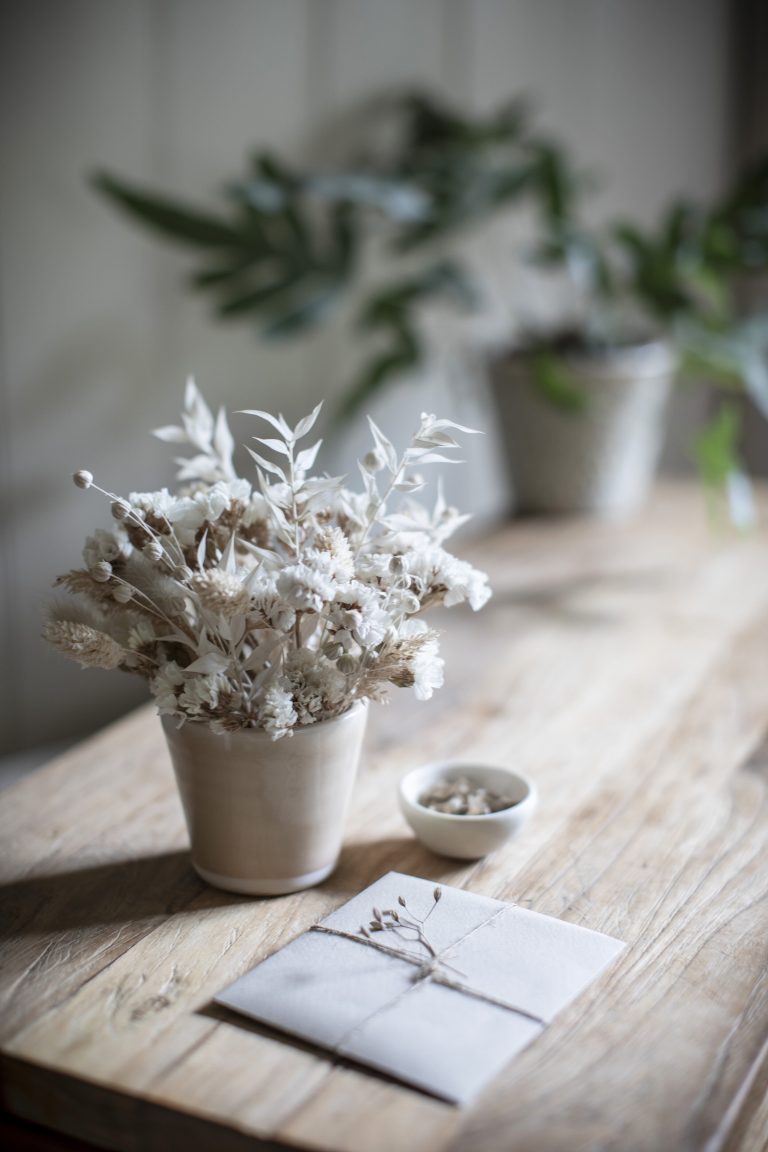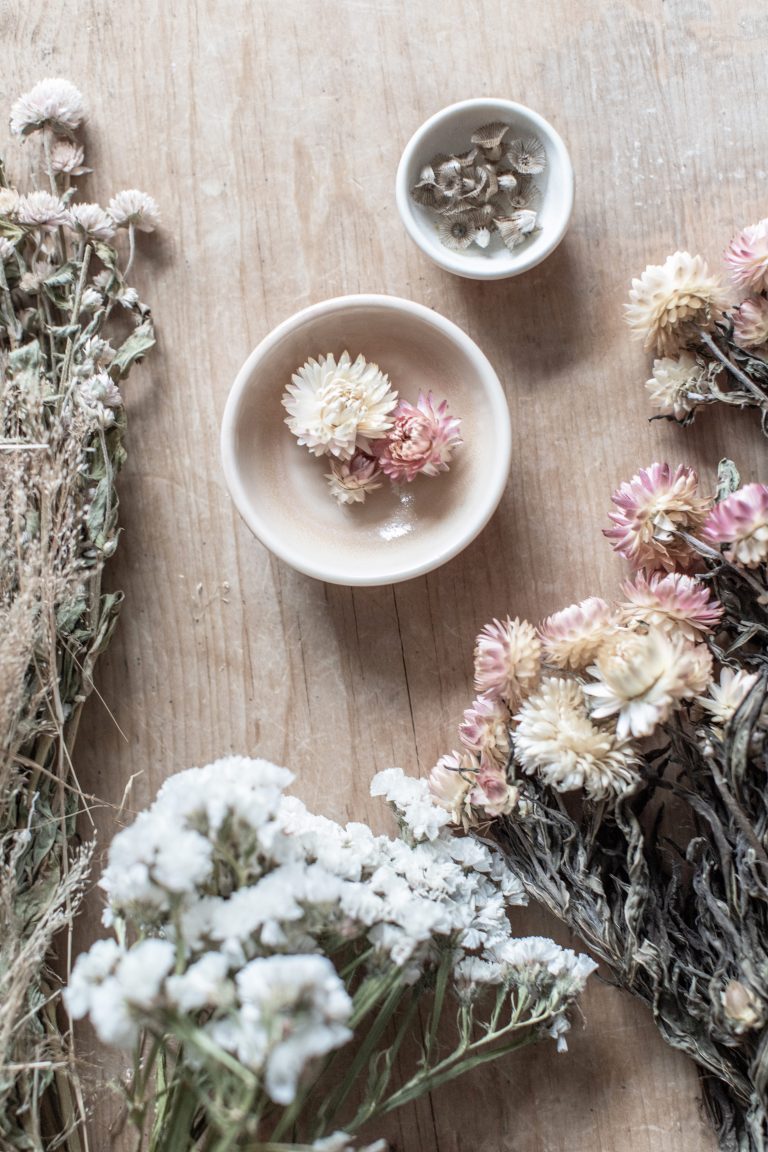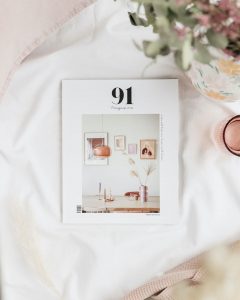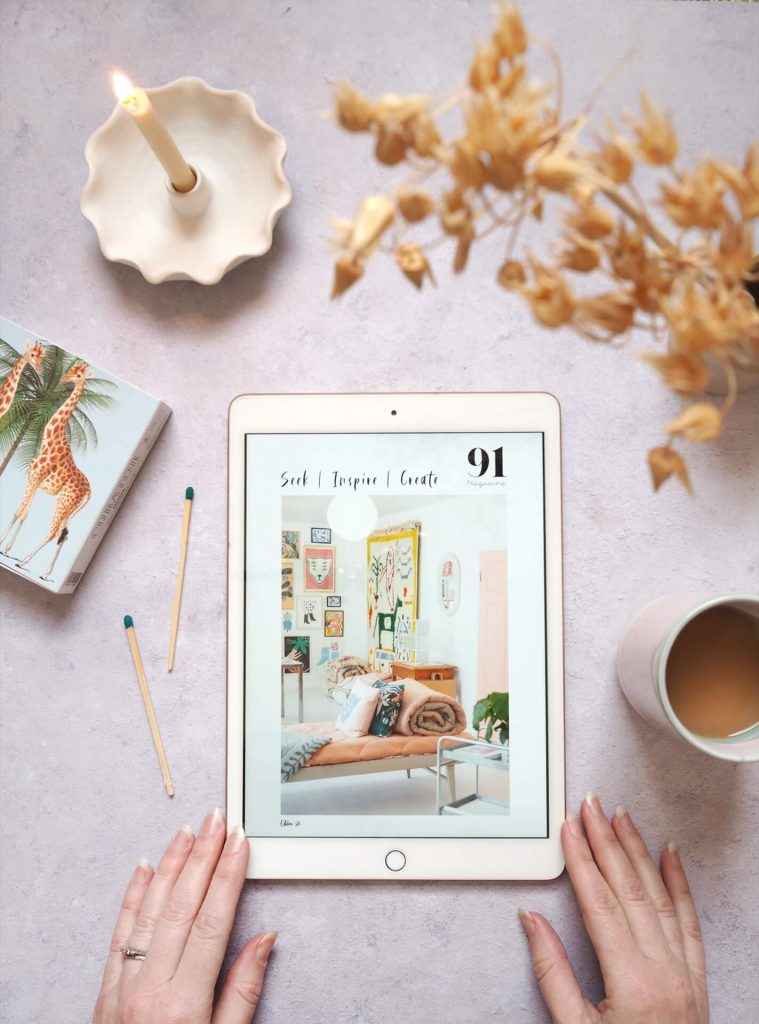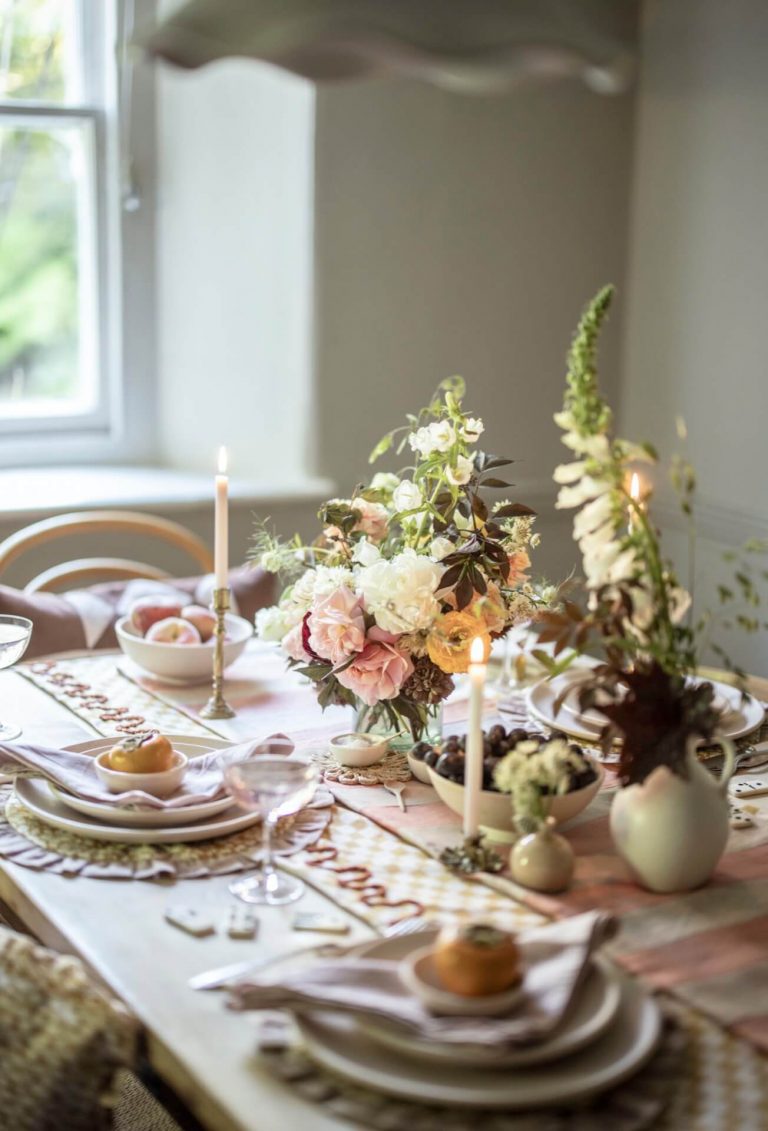Dried flowers have had a significant resurgence over the past year or two, popping up in our Instagram feeds, at local florists and lifestyle stores and even in wedding bouquets. If you have a garden or even a small outdoor space, it is worth considering trying to grow certain flowers with the aim of drying them for long term enjoyment. Claire Holland of Paper Thin Moon has been doing this herself for a while now, even incorporating them into her online shop product range. She shares her experience and knowledge on what works well and how to go about it.
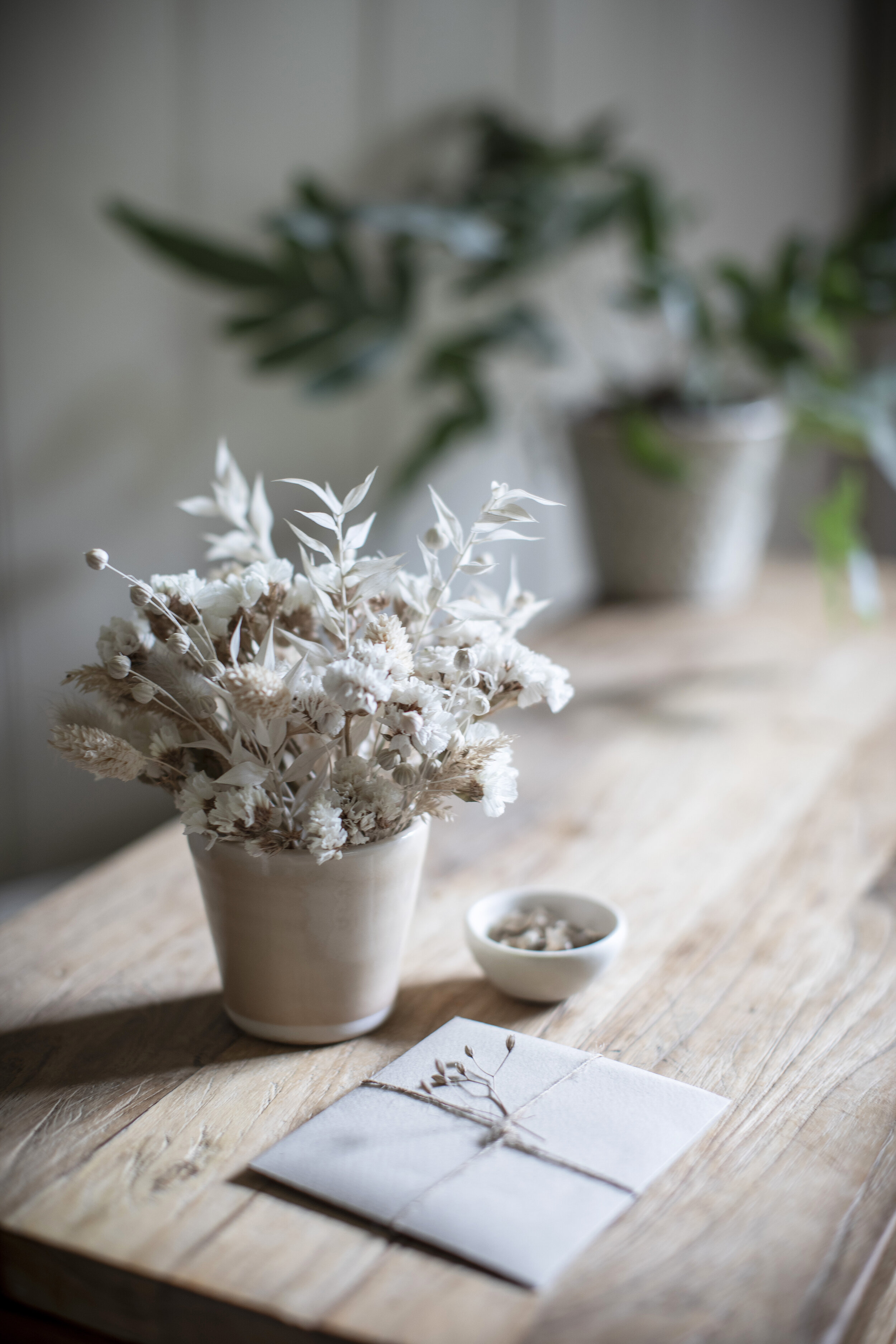
What would we do without flowers? During lockdown, I’ve missed my weekly visits to the local florist and have had to make do with the odd bunch of supermarket offerings (on the rare occasion I could avoid a gaudy mix of primary colours), and what is growing in my garden. With garden centres being closed until recently, I’ve had to rely on the perennials that come back each year and those plants that I’ve grown from seed (I have quite a seed factory in progress this year!). But my house has also been filled with everlasting dried flowers and grasses over the past few years. I go weak at the knees for anything feathery and fluffy, and I particularly like mixing dried grasses with fresh flowers (in summer as well as during the colder months).
There’s been a huge resurgence in interest in dried flowers and grasses of late which, joy of joys, means that it’s getting easier to get your hands on some of the less well-known varieties. However, they can be expensive, which is a good reason to start growing them yourself. I don’t have a big garden, but I’m all about growing and drying what I can. I’ve been experimenting with various varieties recently.
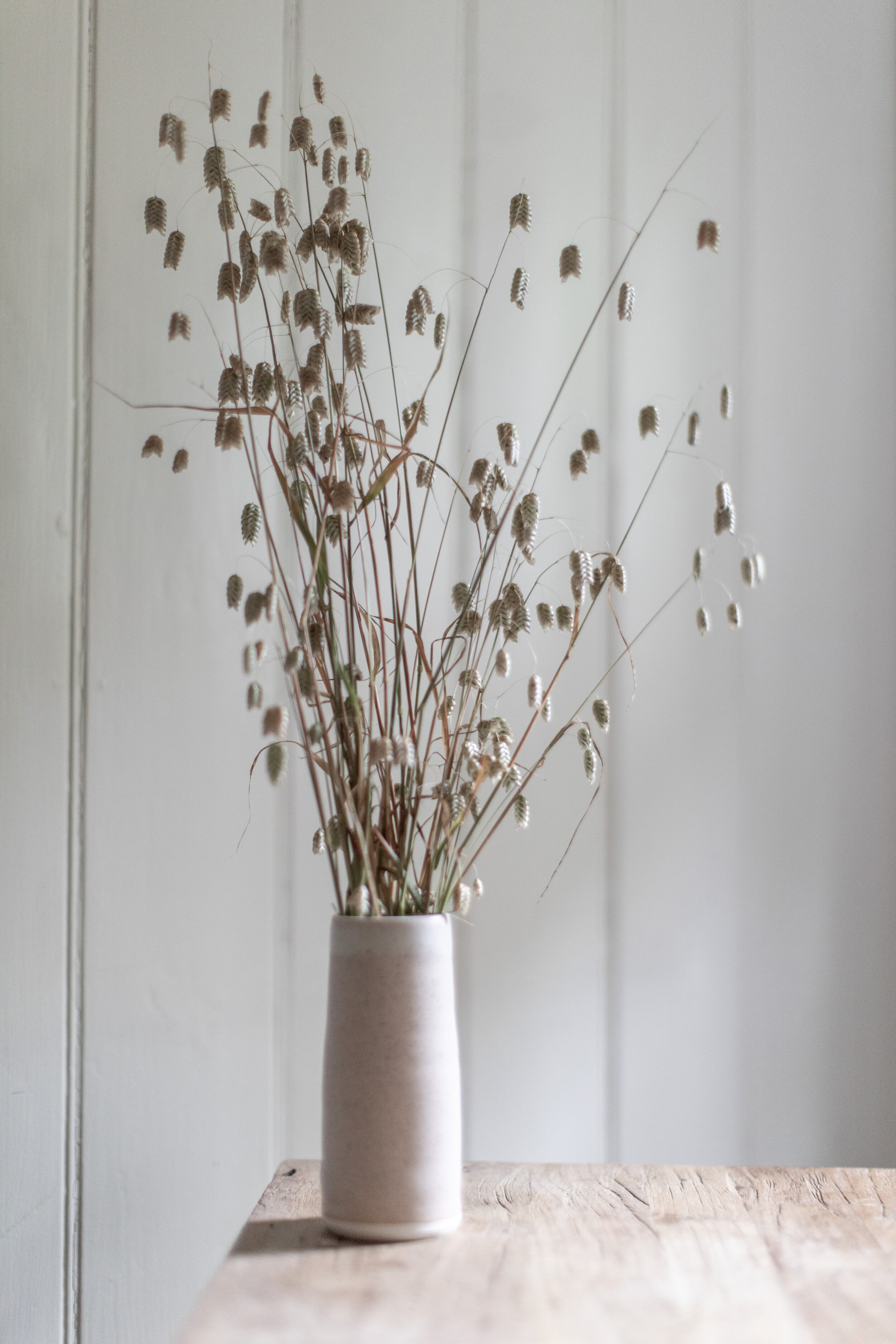
Grasses dry particularly well and work beautifully in winter or summer arrangements. The soft, delicate fronds of lagurus (bunny tails) need little introduction. A friend gifted me a small plant from her garden last summer and it has seeded itself happily all over mine, often into improbably tiny spots. And if you don’t have a garden, it’s as happy in a pot. Likewise briza (quaking) grass and its cousin briza maxima (giant quaking grass). I bought some seeds from the Higgledy Garden a couple of years ago and I now having healthy little plants cropping up all over my south facing beds. Once they’re at full height, they quickly turn a gorgeous golden hue, signalling that they’re ready to cut and dry.
Of the flowers that I’ve grown and dried most successfully, statice has a special place in my heart. Partly because it reminds me of the bunches my mum used to have hanging to dry on the beam in our kitchen when I was growing up, but also for its ease and simple prettiness. I can even forgive its rather ugly green foliage (although I would suggest trying to hide it when thinking about your planting scheme). Thankfully it’s a lot nicer to look at once it’s been dried.
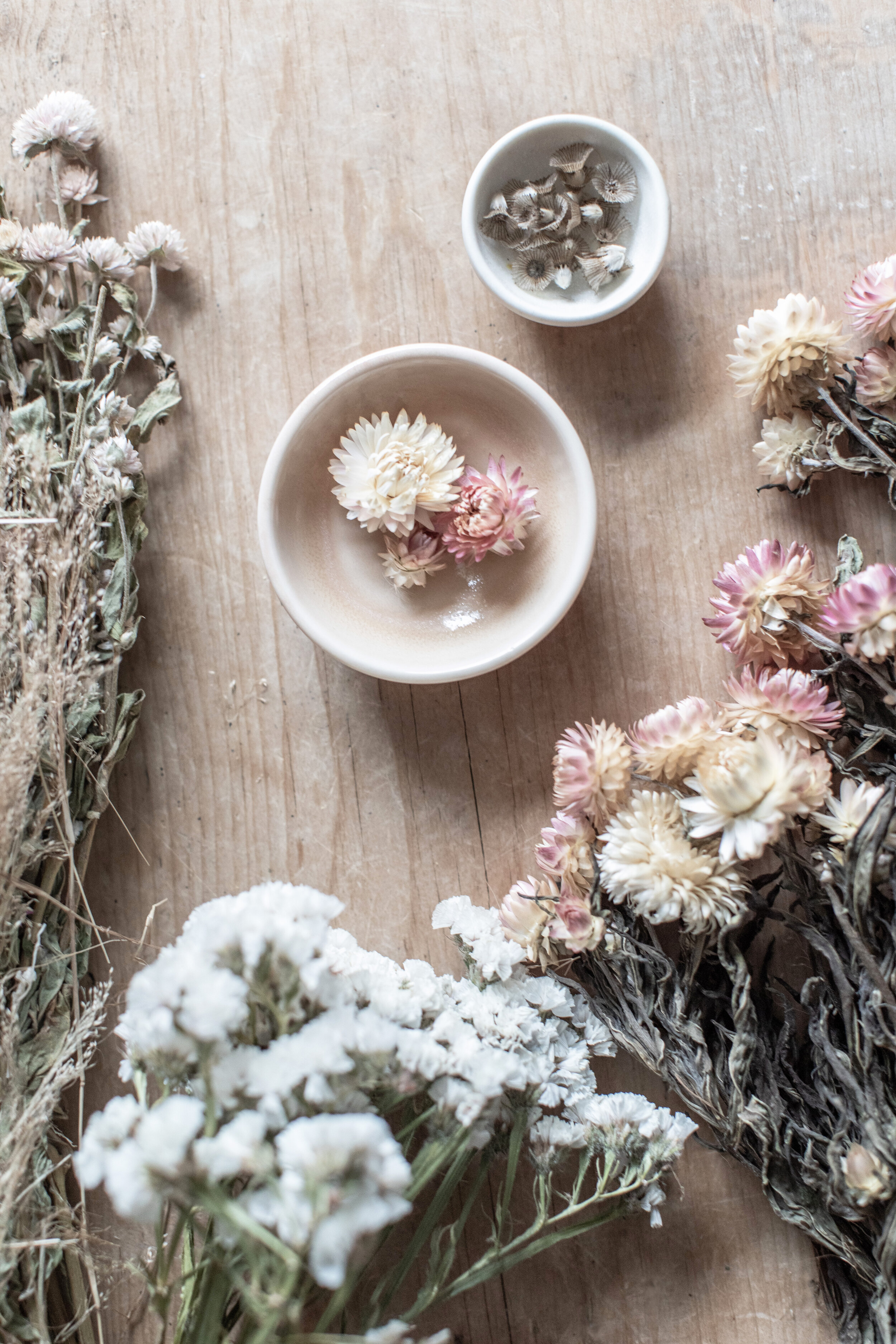
Helychrysum is another plant that a friend gave me a cutting of that I now grow and have quite fallen for. It needs very little looking after and I find that the vibrancy of its deep pink and straw yellow flowers keep me going during the bleak and colourless winter months. I’ve had varying degrees of luck with scabiaosa ping pong, which has a fairly plain, pale blue flower, but produces the most impressive geometric seed head. The trick is to catch them just before they go over, and not to let them get drenched in the rain. More consistently successful have been my nigella (love-in-a-mist) plants, that produce beautiful, pale bronze seed heads that rattle like miniature maracas. They’re great self-seeders, too.
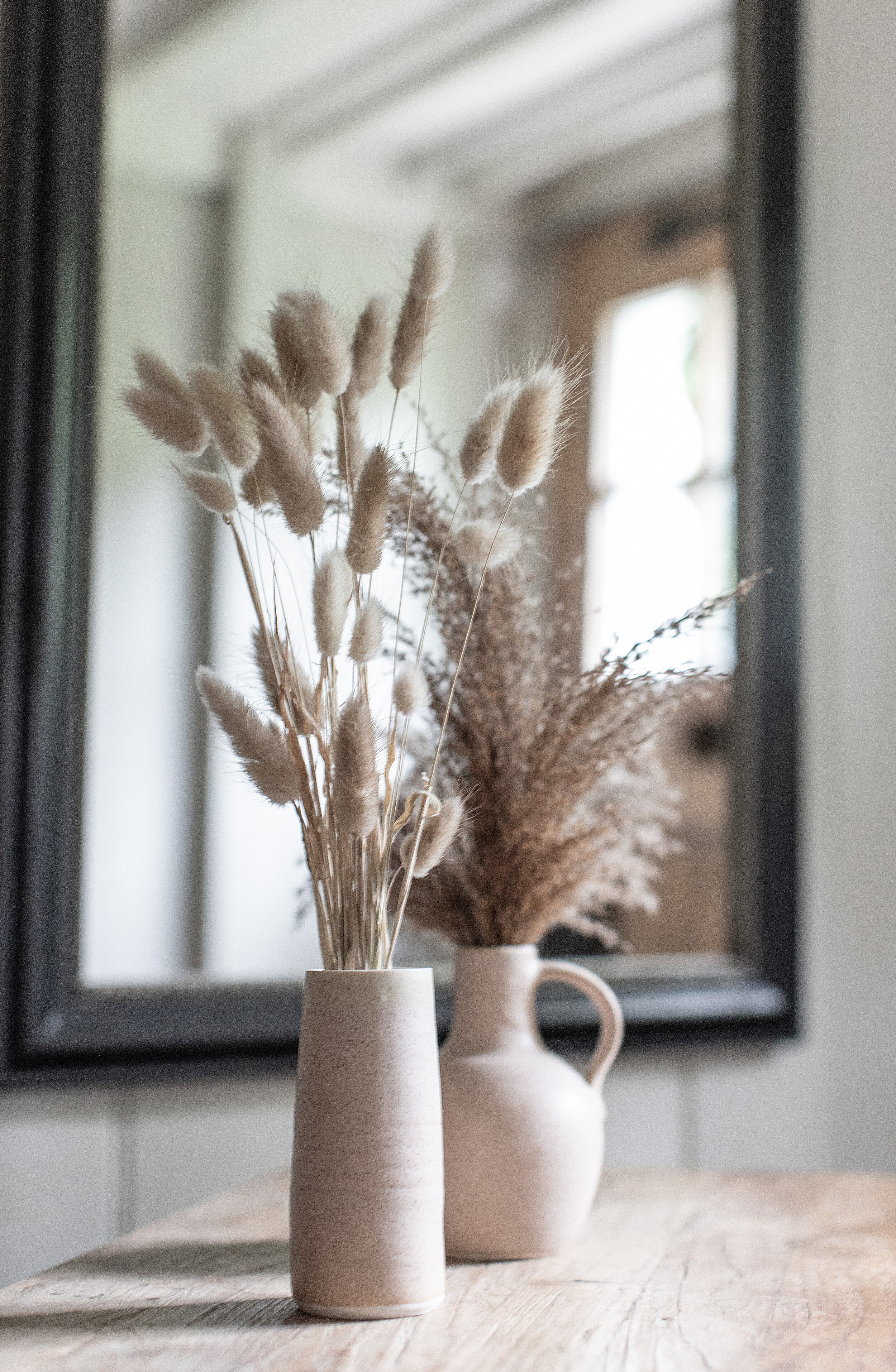
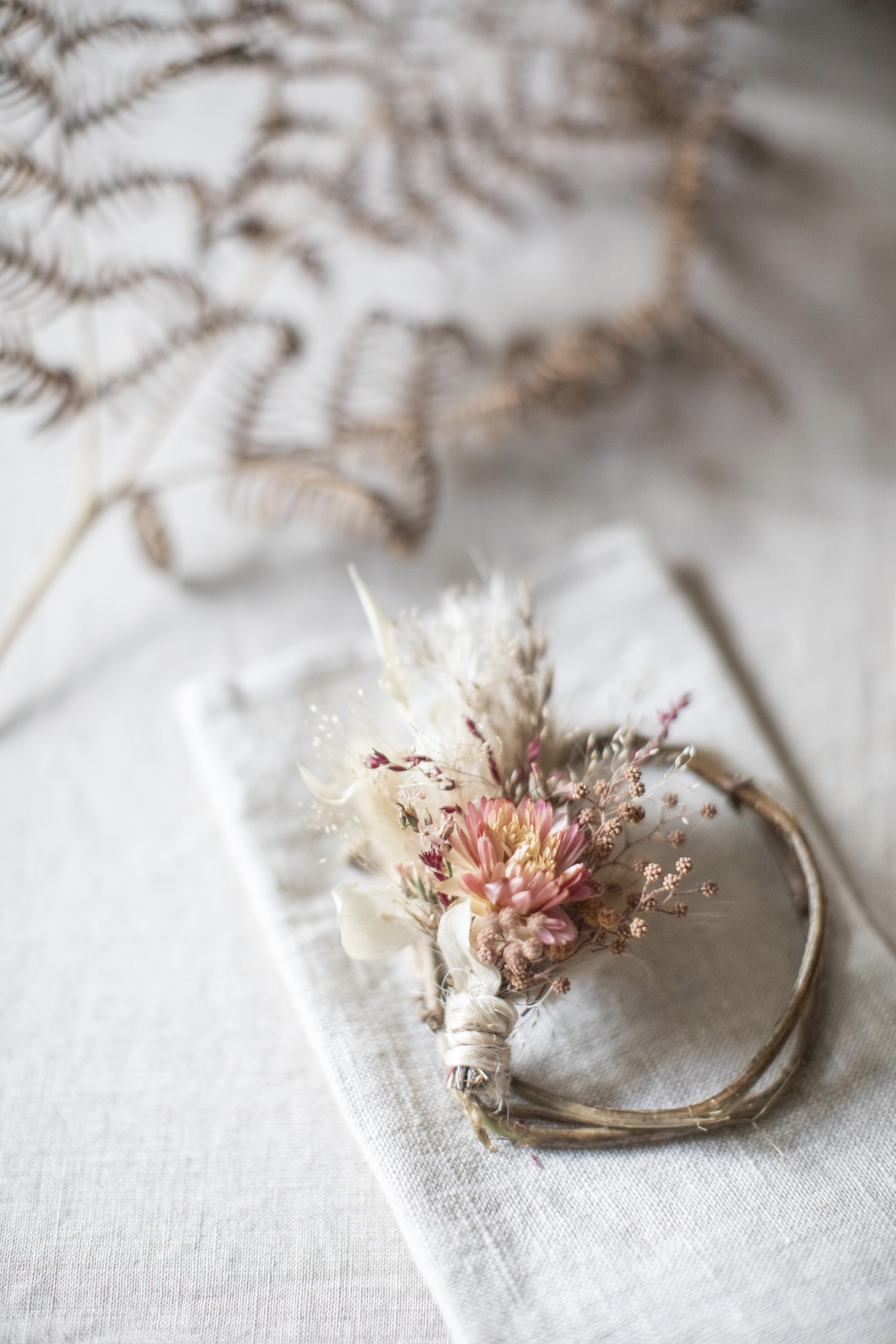
The beauty of these simple plants is that once dried they will last forever if you take care of them, and they can very easily be repurposed. I like to weave mine into wreaths and table decorations, and more recently my homegrown statice and bunny tails have been finding their way into the dried flower posies that I make as part of the plant growing gift sets I sell online. For very little effort and money you can produce a gorgeous collection that will last for years if you look after them. Here are a few tips on which varieties to try and how to dry them.
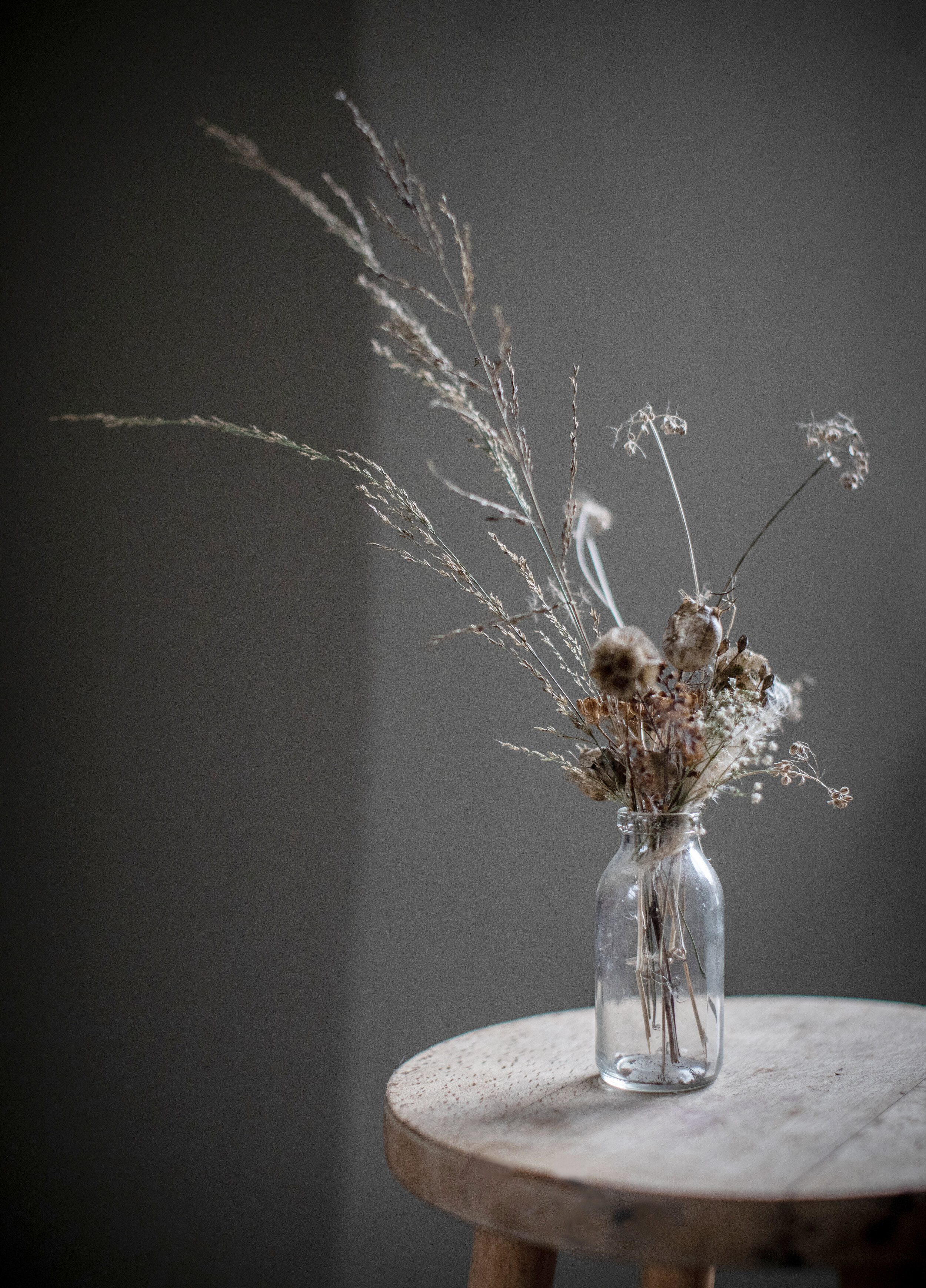
WHAT TO GROW:
- Flowers to try: mimosa, lavender, statice, achillea (yarrow), globe thistle echinops, helichrysum (strawflower) and hydrangea
- Seedheads: nigella, scabiosa ping pong, poppies, craspedia
- Grasses: lagurus (bunny tails), briza (quaking) grass, flowering cloud grass
DRYING:
- Remember to cut flowers when they’re at their best, preferably on a dry afternoon and always after the morning moisture has evaporated. Cut with sharp scissors and keep the stems long.
- Gather into bunches and tie with string or wrap with an elastic band (the tightness of the elastic will help squeeze the moisture from the stems)
- For flowers, I use the air drying method. Simply hang upside down, away from direct sunlight, in a cool, dark spot.
- Grasses can be dried in tall vases standing upright, although I often hang my lagurus, too.
- Hydrangeas and gypsophila should be dried in water. Simply cut them when they’re at their best and leave them in a vase until all the water has gone and they’ll dry out naturally.
To get yourself started with your dried flower collection, do check out Claire’s beautiful growing gifts sets on her website Paper Thin Moon.
